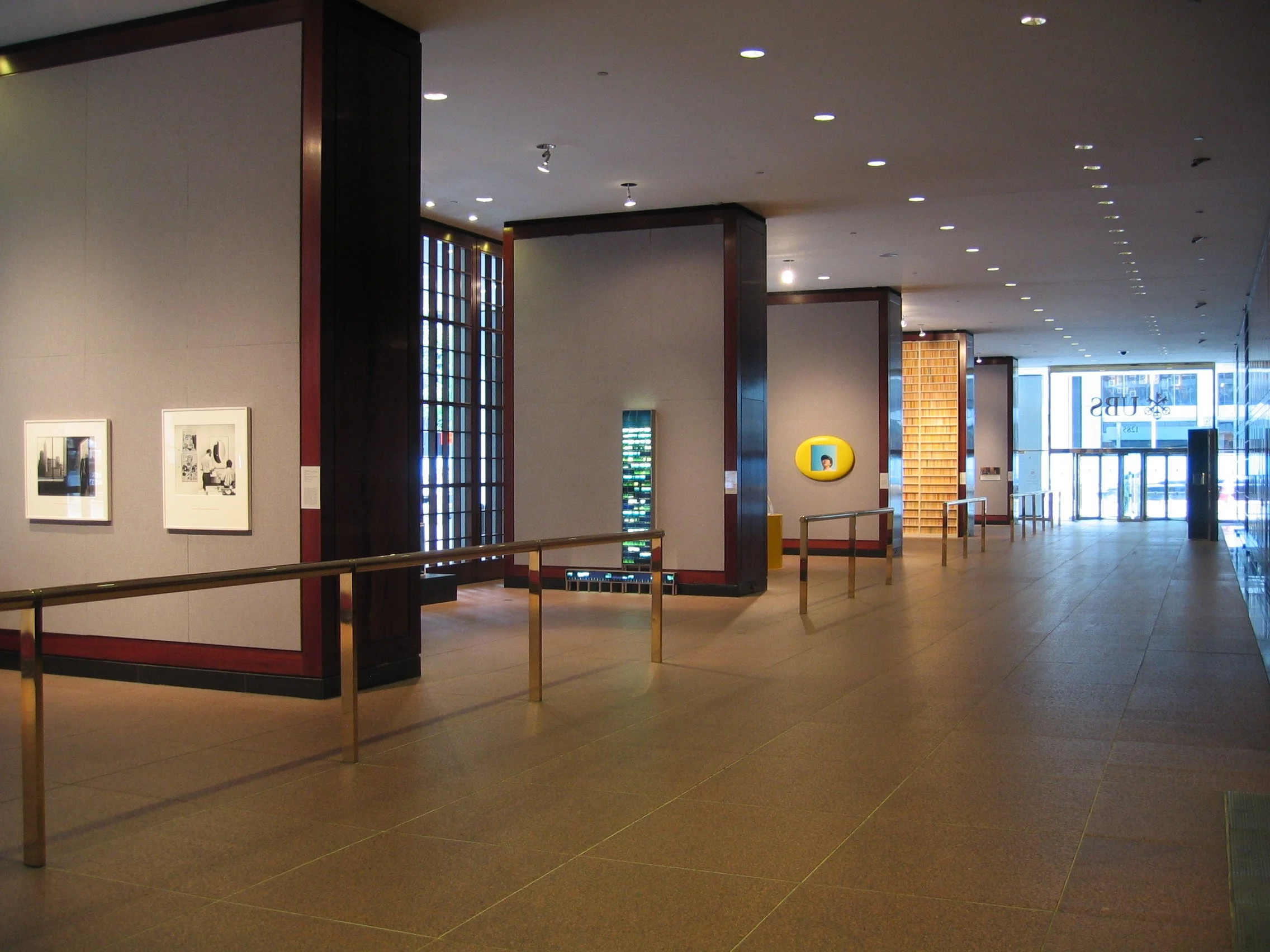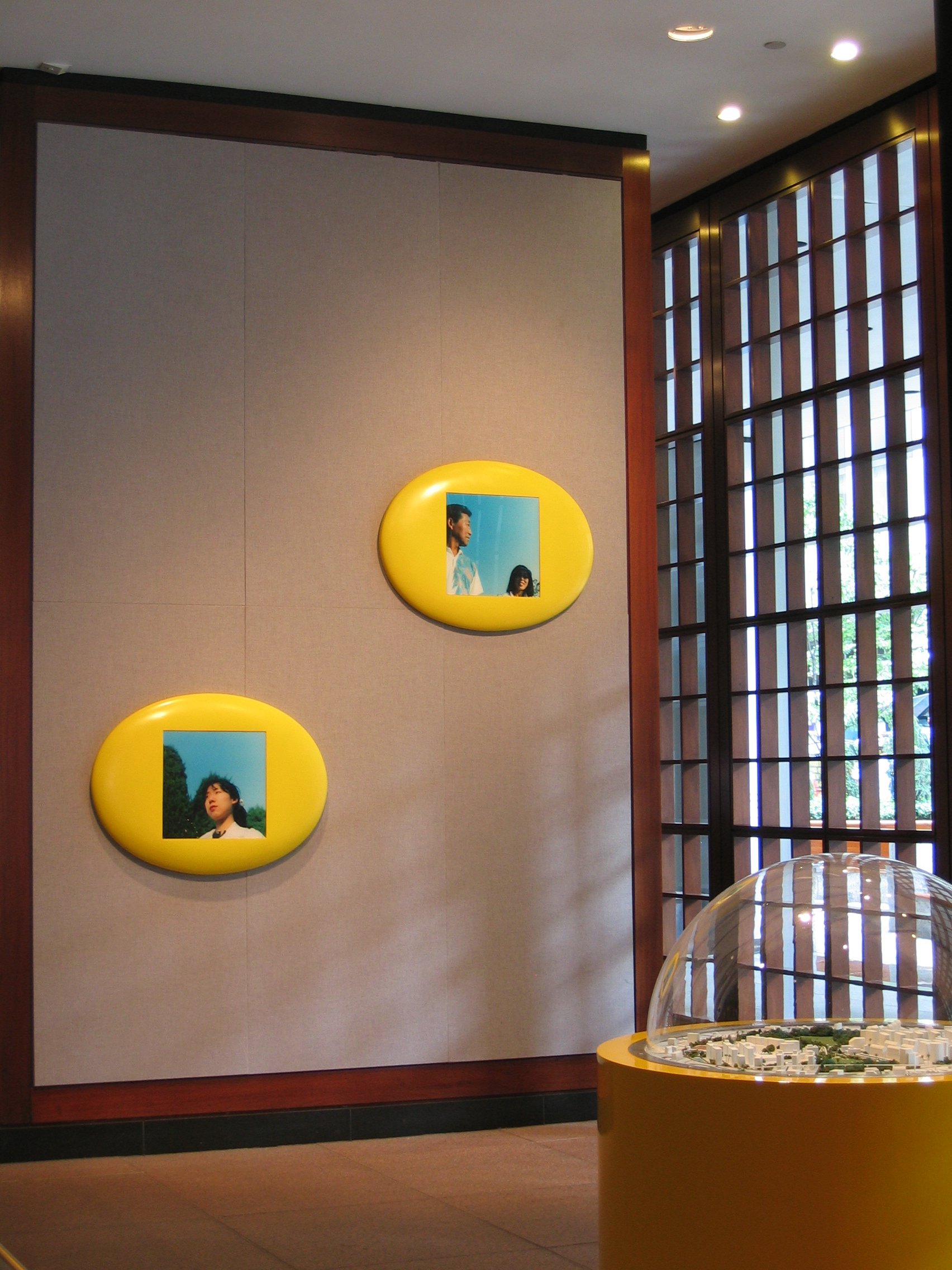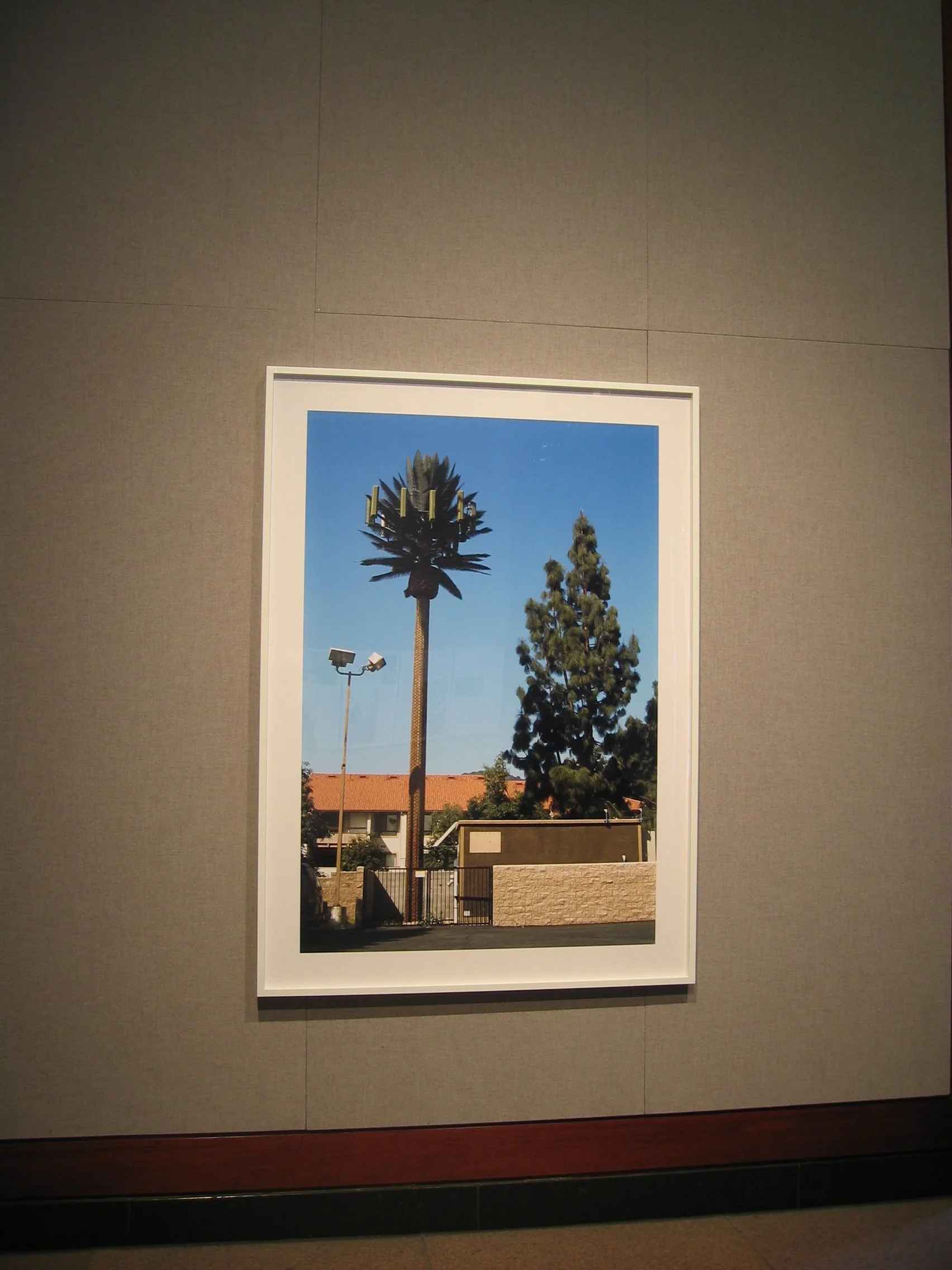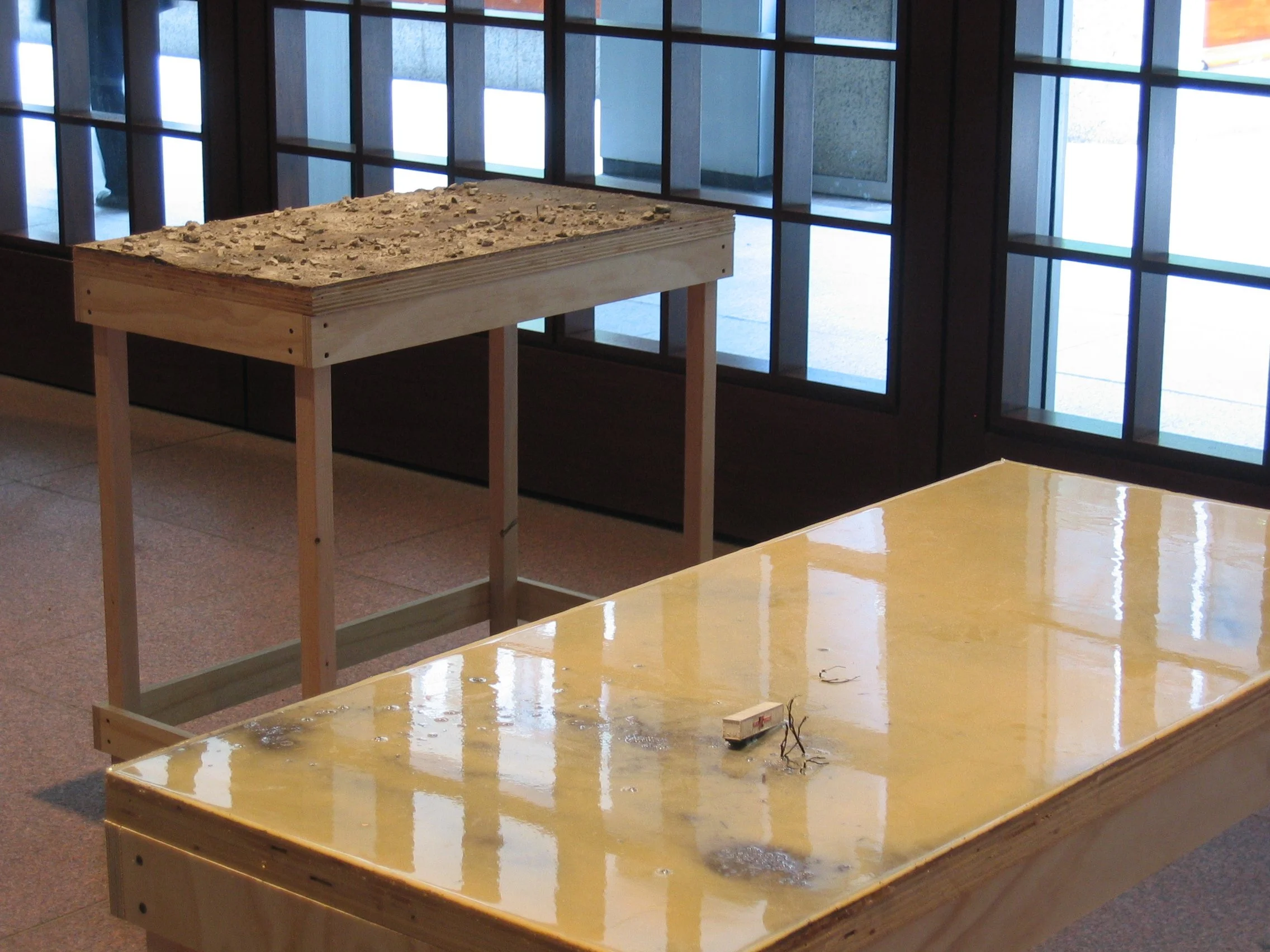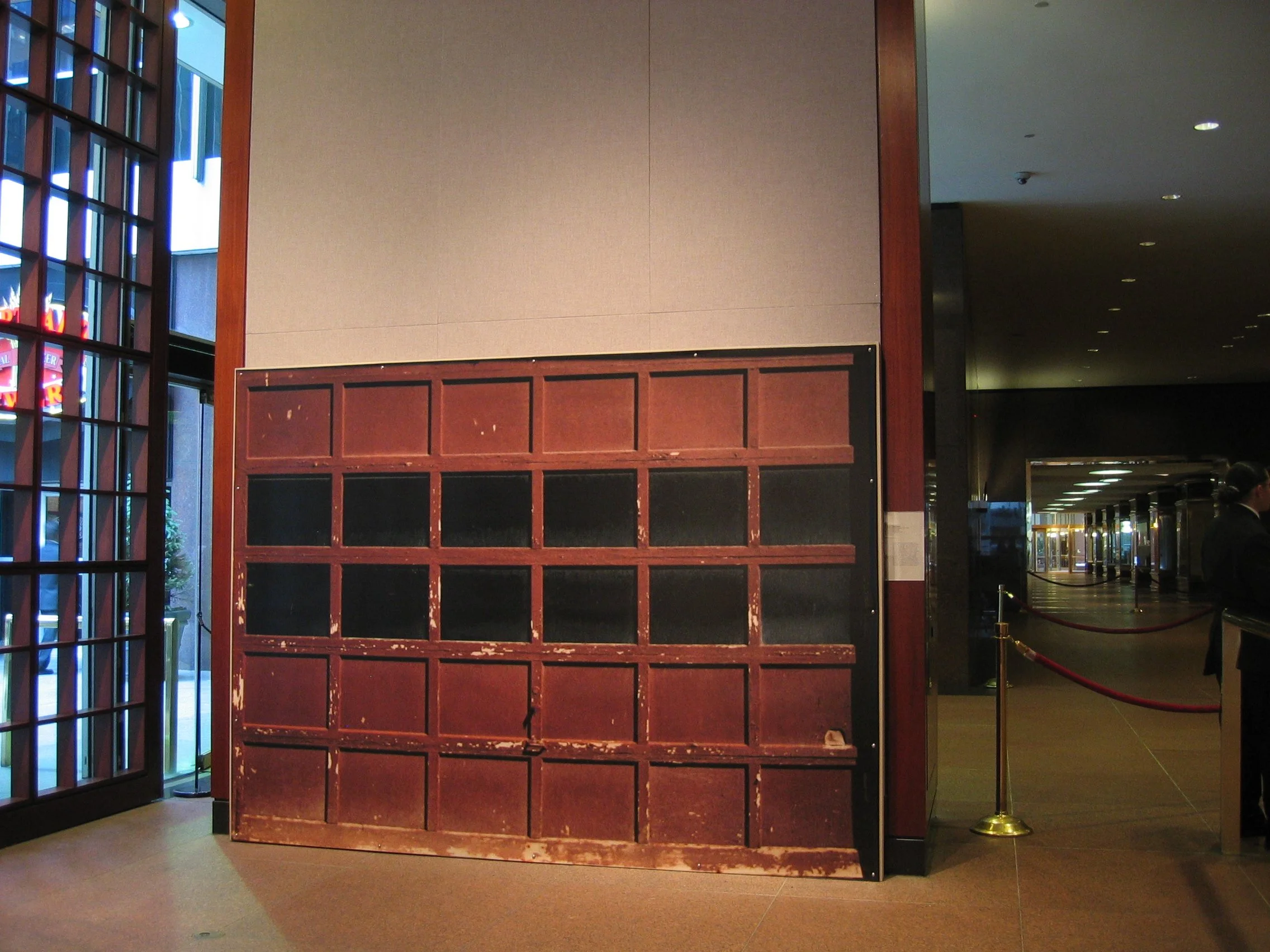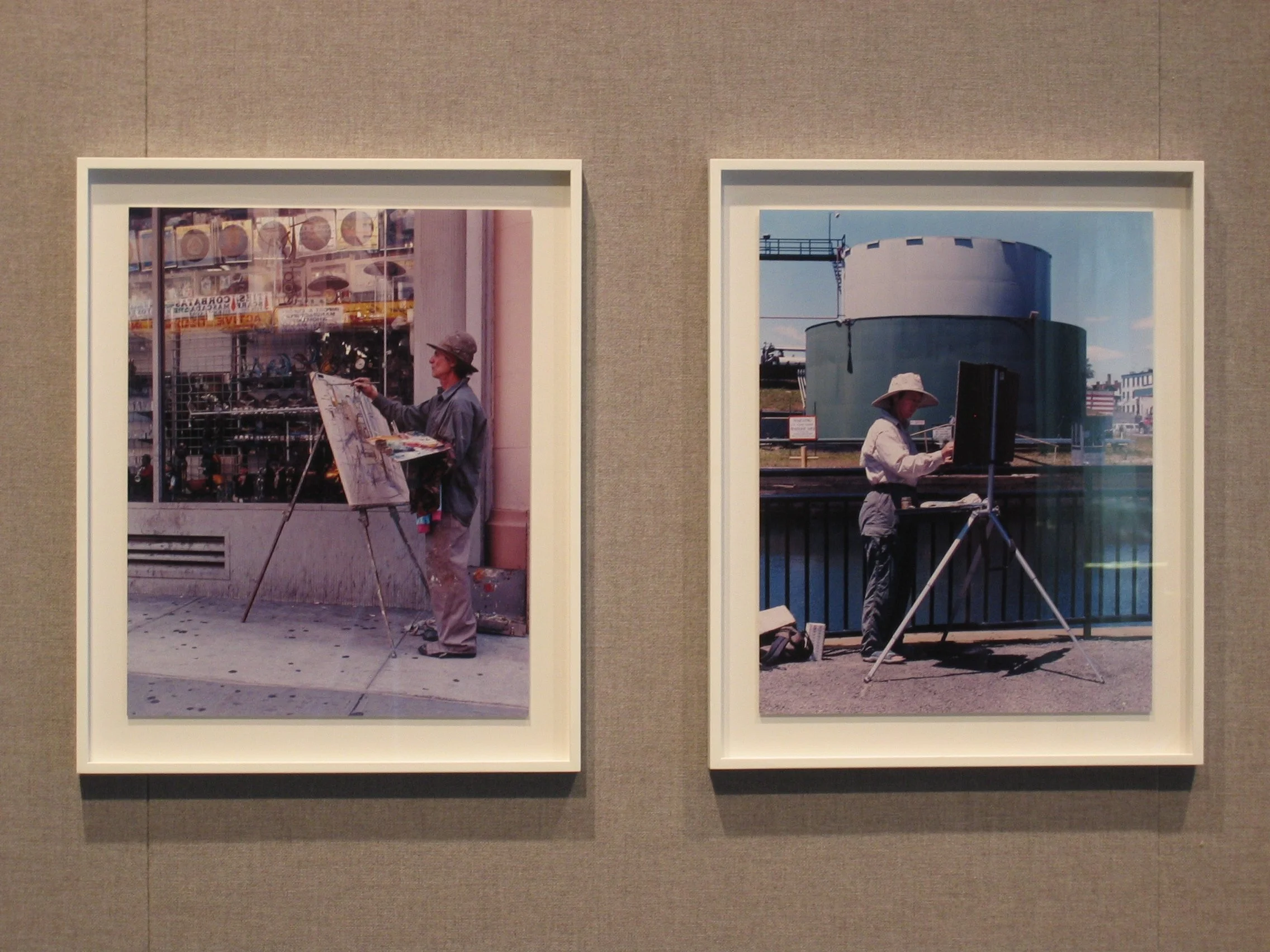Mike Ashkin
Beaumont
Jennifer Bollande
Anne Daems
Dan Graham and Robin Hirst
Cannon Hudson
Craig Kalpakjian
Tom Moore
Louise Lawler
Jeff Preiss
James Mills
Jon Naiman
Rebecca Quaytman
Heidi Schlatter
Jude Tallichet
Momoyo Torimisu
Karen Yama
April 7-June 17, 2005
Out of Place
Engaged in regular pursuits of work and entertainment in the highly stimulating environment of today’s city, our response to the urban landscape is generally one of developing habits and routines. Often lost underneath the traces of our paths, which become well worn with repeated use, is an awareness of the physical spaces whose function is of little relevance to our immediate needs or whose function of which remains unknown. In the ever-expanding cityscape, which perpetually yields to the maxim “grow or die”, the urban dweller must adapt to constant change while attempting to maintain a psychological sense of order and control. For Walter Benjamin, who wrote eloquently about the rapid changes taking place in turn-of-the century Berlin, the modern city consisted of an environment so complex that its buildings were experienced not as autonomous objects but in what he referred to as a “state-of-distraction”, fleeting structures that reveal themselves in a series of glances as one moves about the urban terrain.
This movement, though considered “free” in a liberal democracy, takes place in a setting where all space is, in a sense, “spoken for”. Moving continually in and out of properties that are either public or private in the course of a day, a pedestrian in Manhattan in particular crosses and re-crosses a chaotic set of boundaries whose sometimes arbitrary nature is afforded the impression of order through the city’s horizontal and vertical grids. Internalizing this sense of order through regular compliance with instructions and warnings encourages an experience of urban space that, while functional, fails to take into account the ‘meaning’ of this order, or even whether it serves the purposes that it is implicitly designed for.
In an effort to address the potential conflict between the complex hierarchies of behavioral codes that exist in a “functional” modern metropolis, and the contradictory, pleasure seeking impulses of human instinct that seek the improvisational over the planned, Henri LeFevbre, writing in the 1960’s at particularly tumultuous time in Paris, and more recently Michel DeCerteau in his book “The Practice of Everyday Life” have referred to the significance of the quotidian or ‘everyday’ experience of contemporary life as a means to escape the limits of a purely directional and goal-oriented experience in an ever more controlled urban environment. LeFevbre, witnessing a later phase of urban transformation than what Walter Benjamin had experienced in Berlin, was interested in the effects that an increasingly sophisticated technological society was having on city dwellers who experienced the gradual displacement of the “historical city”, which to that point had lent cohesiveness to urban life. Recognizing that modern technologies were replacing the former social order with a more abstract bureaucracy that allowed for greater control of the individual, both Lefevbre and DeCerteau saw in the emphasis of the “everyday” or “ordinary” experiences a liberating potential that eluded the often harsh and alienating functionality of modern urban experience.
In an effort to examine the overlooked manifestations of what is often considered common, routine or “everyday”, the exhibition “Out of Place” brings together artists who, through various means make reference to the familiar, but through altering the scale, context or expected framing of their subjects, reveal aspects of experience that question our assumptions about them. Taking into account the site of the UBS Gallery where the exhibition takes place, some of the work will specifically address the architecture and physical spaces of midtown Manhattan, offering an experience of place that visitors might come to recognize as having been “hidden in plain sight”.
Louise Lawler, Jennifer Bollande, Momoyo Torimitsu and James Mills
Out of Place Installation view
Louise Lawler
Momoyo Torimitsu
Momoyo Torimitsu
James Mills
Dan Graham
Beaumont
Michael Ashkin
Heidi Schlatter
Jon Naiman
